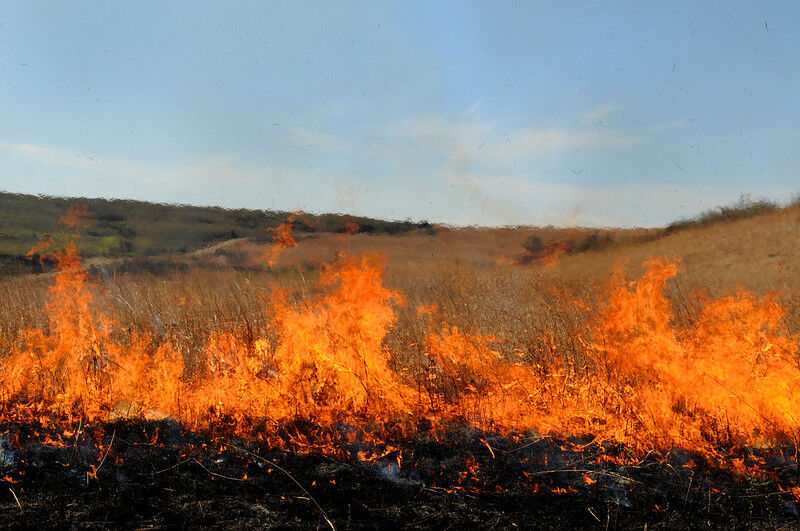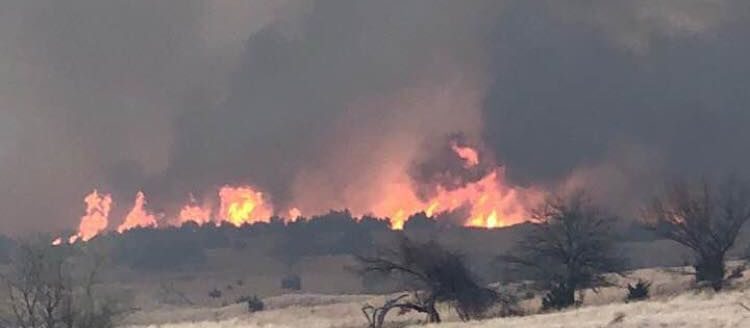Practice provides a method to offset carbon emissions from a cow-calf operation
To the uninitiated, it’s an awesome and sometimes scary sight, coming over a hill to encounter a burning prairie as far as the eye can see. But planned burning—also called prescribed burning—of the tallgrass prairie is a proven effective and widely used way to control invasive plant species. The practice also improves forage quality and cattle weight gains once the grass comes back after burning.
Yearly spring burning on High Plains prairies has been common for years, but smoke that sometimes drifts into cities when planned burning occurs in a short time frame during spring can be a health hazard and creates a problem for manufacturing companies if air quality falls below acceptable Environmental Protection Agency levels.
Recent Kansas State University studies have focused not only on how varying the time of burning affects forage quality and cattle health, but also on how a practice called patch burning compares with traditional spring burning.
Patch burning studies in Kansas, Oklahoma and Tennessee are summarized in the report Alternative Burning Strategies. The studies indicate patch burning helps diversify range ecosystems, does not negatively affect cattle performance and may increase cattle gains compared to pastures that are not burned.
In patch burning, a landowner burns portions of a pasture in a yearly rotation, rather than the whole pasture, said Jaymelynn Farney, K-State Research and Extension beef cattle specialist in southeast Kansas. A common patch-burning regimen is to burn one-third of the pasture each year in a rotation.
Researchers theorize that patch burning mimics historical patterns of burning and grazing, Farney said, similar to a time when fires were ignited by lightning and bison and other species preferred to graze burned areas over grassland that hadn’t been burned.
The studies show that cow-calf pairs grazing patch-burned pastures had similar body condition and weight as cows and calves grazing pastures that were burned entirely or not burned.
In addition, cattle grazing systems are one of the primary sources of greenhouse gas emissions, particularly nitrous oxide and methane. The main factors that control the flow of volatile gas emissions from a beef cattle grazing system are weather conditions, burning regimes, grazing, and soil microorganisms.
In a separate study, Farney teamed with K-State soil microbiologists Chuck Rice and Johanie Rivera-Zayas to evaluate the effect of annual burning and patch burning on a three-year basis in three watersheds under an animal density of one cow-calf pair per grazed 7.9 acres. Results showed that patch burning on a three-year basis can offset 90% of methane emissions from the beef cattle cow-calf pair after one year of burning and 63% after two years of burning.
“Results provide quantifiable evidence of the role of managed—grazed and burned—temperate grassland soils as a strategy for the removal (sink) of methane and nitrous oxide,” the researchers wrote in the report. “These findings demonstrate the importance of this alternative burning method for supporting the food supply, economy and ecosystem.”
More information on patch burning is available in Alternative Burning Strategies. Information about other prescribed burning research as well as other beef cattle research is available in the 2020 Cattlemen’s Day Report.


